The Silent Crisis: Why Now is the Time to Invest in Solar
Remember the Great Solar Boom?
The “infamous solar rush” was a frantic time in South Africa. As Eskom’s load shedding became a daily reality, homes and businesses rushed to find a solution. The market was flooded with options, and many people, acting in crisis mode, chose the cheapest products and installers without considering the long-term value.
This led to a period where “fly-by-night” installers sold subpar products, leaving many with future headaches, non-compliant systems, and serious safety hazards. In the process, the solar industry earned a reputation for being unstable and risky.
Then came the solar plummet. As load shedding became less frequent, the urgency evaporated. Thousands of solar companies that had sprung up overnight disappeared, unable to survive the market correction.
This might look like the end of the story, but it’s really the start of a new, quieter crisis.
The New Crisis: Escalating Electricity Tariffs
The visible crisis of load shedding has been replaced by a silent one: relentless electricity tariff hikes. Slowly but surely, the cost of grid power has crept up, and we are now at its mercy.
This silent crisis is exactly why now is the perfect time to reconsider solar, not as a quick fix, but as a long-term investment.
In the world of finance, the golden rule is to buy low and sell high. The solar market’s “plummet” has created a unique opportunity. The inflated prices and rushed installations of the boom are gone, leaving a more stable and mature industry. For those who approach solar with an investor’s mindset, the timing couldn’t be better.
Solar has some of the highest yields and lowest risks of any investment product. It’s not just about keeping the lights on anymore; it’s about smart, strategic financial planning.
Solar as a Profitable Mid-Term Investment
Many solar companies during the boom missed the true value of their product: its potential as a mid-term investment. With escalating electricity costs, the return on investment (ROI) for a solar installation is becoming increasingly impressive. Here’s why:
- Selling Power Back to the Grid: In some municipalities, like the City of Cape Town, you can export excess power back to the grid. This allows you to generate credits on your bill, or in some cases, even earn a cash payout.
- Time of Use Tariffs: Battery backup systems allow you to take advantage of off-peak and on-peak hours. You can charge your batteries when electricity is cheapest and use that stored power during expensive peak times. This is a form of energy arbitrage that directly cuts your monthly costs.
By using real-time data and AI-powered programs, we can design a system that not only meets your power needs but also maximises these yields. This data helps you understand your break-even point and the true profitability of your system.
The Best Time to Invest
For savvy investors, timing is everything. For solar, the quietest months for installers—June, July, and August—are often the best time to buy. The winter rains in Cape Town and surrounding areas slow down installations, which means:
- Shorter lead times from suppliers.
- More detailed and focused quotes from installers.
- The possibility of specials and reduced pricing, giving you the most bang for your buck.
Beyond the immediate financial yields, a solar installation is a multifaceted investment. It increases the value of your property by an estimated 8% and makes it more desirable to future buyers.
The solar rush may be over, but the smart investment opportunity has just begun. It’s time to stop just reacting to a crisis and start investing in a more profitable, secure future.
Let’s Hear What the Experts Had to Say About Our Theories Regarding a Solar Investment
Why Solar in 2025?
The year 2025 presents a unique opportunity for households and businesses in South Africa to invest in solar energy. Multiple factors are converging to make this the most advantageous time to adopt solar, including soaring electricity tariffs, falling technology costs, favourable tax incentives, resilience against load shedding, and strong returns on investment (Dickson, 2024; Colite Technologies, 2025).
With South Africa’s energy crisis continuing to escalate, solar is no longer just an environmental choice — it has become an economic necessity and a strategic investment (MDW Inc., 2024).
Rising Electricity Costs and Tariff Hikes
- Eskom has proposed an electricity tariff increase of 36.15% for 2025 (Dickson, 2024).
- This dramatic rise is compounded by South Africa’s reliance on aging, unreliable coal-fired power plants, creating both higher costs and unstable supply.
- Households and businesses are increasingly turning to solar to hedge against future tariff hikes and establish predictable, long-term energy costs (Colite Technologies, 2025).
- Inflation in South Africa is projected to ease to around 4.5% in 2025, which means that the relative affordability of solar is improving as technology costs continue to drop (Dickson, 2024).
- Rising costs are one of the strongest motivators.
Falling Solar Costs and Financial Incentives
- Globally, the cost of solar panels has dropped by around 70% over the past decade, making installation far more accessible (Conexsol, 2025).
- In South Africa, the government introduced a 25% solar tax rebate (up to R15,000) for individuals installing rooftop systems.
- Businesses can also benefit from the Enhanced Renewable Energy Tax Incentive, which allows for accelerated depreciation of solar assets until February 2025 (Dickson, 2024; MDW Inc., 2024).
- Financial support such as subsidies, tax credits, and accelerated depreciation programs makes the upfront cost significantly more manageable (Nativ Techniks, 2025).
- Solar has never been more affordable, and 2025 is the last chance for some incentives.
Return on Investment (ROI) and Property Value
- The payback period for solar in South Africa typically ranges from 4 to 7 years, after which households and businesses essentially enjoy “free electricity” for the remaining lifespan of the system (Birkansolar, 2025).
- Most solar systems last 25–30 years, making them a highly stable, long-term investment (Colite Technologies, 2025).
- Residential properties with solar installations are selling at a 4.1% average price premium compared to non-solar homes, due to buyers valuing long-term energy security (Colite Technologies, 2025).
- For commercial properties, benefits include improved ESG scores, lower tenant turnover, and the ability to attract eco-conscious tenants or investors (Colite Technologies, 2025).
- Solar is not just an energy investment — it’s also a real estate and asset growth strategy.
Load Shedding Resilience and Energy Independence
- South Africa’s persistent load shedding crisis remains a major driver of solar adoption.
- Businesses face lost revenue and productivity, while households endure disruption to daily life.
- By integrating solar with battery storage, users can secure stable backup power during grid failures, protecting themselves from downtime losses (MDW Inc., 2024; Colite Technologies, 2025).
- Energy independence reduces dependence on Eskom and builds long-term resilience, which is especially critical for industries that cannot afford downtime (Colite Technologies, 2025).
- Solar offers freedom.
Environmental and CSR Benefits
- A standard solar system reduces 3–4 tons of CO₂ annually, equivalent to planting about 100 trees per year (Conexsol, 2025).
- For businesses, solar aligns with Corporate Social Responsibility (CSR) goals and strengthens brand reputation among eco-conscious consumers and investors (AI Overview, 2025).
- Solar adoption contributes to South Africa’s transition toward a green economy, helping the country reduce reliance on coal and meet its renewable energy targets (Solar Planet UK, 2025).
- For business audiences, this is a brand and reputation benefit. For households, it’s about leaving a cleaner legacy.
Technological Advancements in 2025
- Solar panel efficiency has improved significantly, with modern panels achieving 23–25% efficiency, compared to 15% a decade ago (Conexsol, 2025).
- Innovations such as bifacial panels, perovskite cells, and smart inverters have made systems more powerful and adaptable (Conexsol, 2025).
- Integration of AI-driven energy management and real-time performance tracking apps has made solar ownership more user-friendly and transparent (Colite Technologies, 2025).
- Battery storage is becoming cheaper and more reliable, increasing the viability of off-grid or hybrid systems (Nativ Techniks, 2025).
- Solar is no longer clunky, it’s cutting-edge.
Financial Challenges and Considerations (Balanced View)
- High upfront costs remain a barrier for many households, although tax rebates and financing options ease this (MDW Inc., 2024).
- Battery replacement costs are an additional consideration over the system’s lifetime (MDW Inc., 2024).
- Many systems remain partially grid-dependent, meaning that users are not entirely free from Eskom’s tariffs (MDW Inc., 2024).
- The benefits still outweigh the costs.
Why 2025 Is the Year to Invest
All indicators — from rising electricity tariffs to falling solar costs, favourable tax incentives, strong ROI, technological advancements, and resilience against load shedding — suggest that 2025 is the perfect window for South Africans to invest in solar.
- For households, it offers energy security, cost savings, and higher property value.
- For businesses, it delivers ROI, operational resilience, and brand credibility.
Solar in 2025 is not just about saving money, but about futureproofing against energy instability in South Africa.
Conclusion
In conclusion, it’s a no-brainer — solar is one of the top investments today, and now is the time to take the leap into the future of our electricity, renewable energy, and self-sustainability.
References
- Arka360. (2025). Financial Benefits of Going Solar. Available at: https://arka360.com/ros/financial-benefits-going-solar (Accessed: 23 August 2025).
- Birkansolar. (2025). The Economic Benefits of Switching to Solar Energy in 2025. Available at: https://www.birkansolar.com/blog/the-economic-benefits-of-switching-to-solar-energy-in-2025 (Accessed: 28 August 2025).
- Colite Technologies. (2025). Why Solar Investment Is Still One of the Best Long-Term Moves in 2025. Available at: https://colitetech.com/blog/why-solar-investment-is-still-one-of-the-best-long-term-moves-in-2025/ (Accessed:16 August 2025).
- Conexsol. (2025). Top 5 Reasons to Go Solar in 2025. Available at: https://conexsol.com/top-5-reasons-to-go-solar-in-2025/ (Accessed: 27 August 2025).
- Dickson, A. (2024). Solar demand set to surge in 2025: How to protect your business’s investment. CBI-electric Low Voltage. Available at: https://cbi-lowvoltage.co.za/content/solar-demand-set-surge-2025-how-protect-your-business%E2%80%99-investment (Accessed: 16 August 2025).
- MDW Inc. (2024). The Financial Costs and Benefits of Solar Power. Available at: https://mdwinc.co.za/2024/02/05/the-financial-costs-and-benefits-of-solar-power/ (Accessed: 25 August 2025).
- Nativ Techniks. (2025). Top 5 Reasons to Consider Solar Energy Investments in 2025. Available at: https://nativtechniks.com/top-5-reasons-to-consider-solar-energy-investments-in-2025/ (Accessed: 26 August 2025).
- Solar Planet UK. (2025). The Benefits of Going Solar in 2025: Why Now Is the Perfect Time. Available at: https://solarplanet.uk/the-benefits-of-going-solar-in-2025-why-now-is-the-perfect-time/ (Accessed: 23 August 2025).

